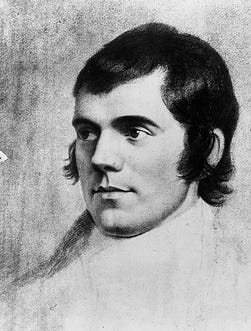|
 |
The Writer's Almanac from Monday, November 27, 2017
“Mother's Prayer” by Athena Kildegaard from Bodies of Light. © Red Dragonfly Press, 2011.
ORIGINAL TEXT AND AUDIO - 2017
New York City's Pennsylvania Station opened on this date in 1910. Better known as Penn Station, the 1910 version bore absolutely no resemblance to the structure as we know it today. It was a grand example of the Beaux-Arts style, built of pink granite, with stately columns and a skylit interior modeled after a Roman bath. The main waiting room alone was a block and a half long, with 150-foot ceilings. Its tunnels, which ran under the Hudson River, were engineering marvels.
By the late 1950s, though, air travel had gotten cheaper, and the new, smooth, interstate highways tempted people to take automobile trips rather than boarding a train. The rail company couldn't afford to keep its showplace clean, and plans were made to replace Penn Station — at least the above-ground portion of it — with a multi-use entertainment venue, to be called Madison Square Garden.
The stately Beaux-Arts building was leveled in 1963, and replaced with a subterranean, air-conditioned warren lit by cold, fluorescent bulbs. New Yorkers were outraged at the demolition. One New York Times editorial from 1963 read, "We will probably be judged not by the monuments we build but by those we have destroyed." That outrage helped jump-start the architectural preservation movement in the United States. The New York Landmarks Law was passed two years later, just in time to save Grand Central Terminal, Radio City Music Hall, and thousands other historical landmarks from a similar fate.
Train travel through Penn Station has bounced back; today, it's the busiest train station in the Western Hemisphere. Nevertheless, a writer for the BBC recently called the modern Penn Station an "architectural crime scene," and added, "Outside of the U.S. penitentiary system, it is hard to think of a more joyless building." Vincent Scully, a professor of architecture at Yale, commented, "One entered the city like a god; one scuttles in now like a rat."
It was on this day in 1786 that Scottish poet Robert Burns borrowed a pony and made his way from his home in Ayrshire to the city of Edinburgh.
The fall of 1786 had been an eventful one for Burns. He wasn't making any money farming, and after he got his girlfriend Jean Armour pregnant, he decided he needed to find a way to support his new family — not to mention his illegitimate one-year-old daughter, whose mother was a servant in the Burns household and wanted money. Burns accepted a friend's offer to work as a clerk in Jamaica, and was set to leave in September.
A few weeks before his departure date, he published Poems, Chiefly in the Scottish Dialect (1786), hoping to raise enough money to pay his fare to Jamaica. Instead, the book was so successful that Burns began to doubt if he should leave Scotland. Then Jean gave birth to twins. At the same time, he received word that Scottish poet Thomas Blacklock liked his book and encouraged him to come to Edinburgh. Burns wrote: "I had taken the last farewell of my few friends, my chest was on the road to Greenock; I had composed the last song I should ever measure in Scotland — 'The Gloomy night is gathering fast' — when a letter from Dr. Blacklock to a friend of mine overthrew all my schemes, by opening new prospects to my poetic ambition. The Doctor belonged to a set of critics for whose applause I had not dared to hope. His opinion that I would meet with encouragement in Edinburgh for a second edition, fired me so much, that away I posted for that city, without a single acquaintance, or a single letter of introduction." He borrowed a pony from a friend, and off he went.
The story goes that during his two-day trip to Edinburgh, he was entertained lavishly by farmers eager to meet the poet. A friend of his had arranged for a farmhouse where he could stay for the night. There were so many people excited to see Burns that when he arrived, one farmer raised a makeshift flag — a white sheet tied to a pitchfork — and on cue all the neighboring farmers arrived to host Burns for a huge meal. He rode on to another farmhouse for a large breakfast the next morning, and yet another farm for lunch. By evening of the second day, he finally arrived in Edinburgh.
He was delighted by his reception there, and everyone's enthusiasm about publishing a second edition of Poems, Chiefly in the Scottish Dialect. About a week after his arrival, he wrote in a letter: "For my own affairs, I am in a fair way of becoming as eminent as Thomas à Kempis or John Bunyan; and you may expect henceforth to see my birthday inserted among the wonderful events, in the Poor Robin's and Aberdeen Almanacks, along with the Black Monday, and the Battle of Bothwell Bridge. My Lord Glencairn and the Dean of Faculty, Mr. H. Erskine, have taken me under their wing; and by all probability, I shall soon be the tenth worthy, and the eight wise man of the world. Through my Lord's influence it is inserted in the records of the Caledonian Hunt, that they universally, one and all, subscribe for the second edition."
Be well, do good work, and keep in touch.®
Support your favorite show with a daily dose of history and poetry by wearing our new shirt design. We are an open book and so we put the show's name front and center on the new red shirt design from Excel Images.CLICK HEREto order.
If you are a paid subscriber to The Writer's Almanac with Garrison Keillor, thank you! Your financial support is used to maintain these newsletters, websites, and archive. If you’re not yet a paid subscriber and would like to become one, support can be made through our garrisonkeillor.com store, by check to Prairie Home Productions, P.O. Box 2090, Minneapolis, MN 55402, or by clicking the SUBSCRIBE button. This financial support is not tax deductible.


